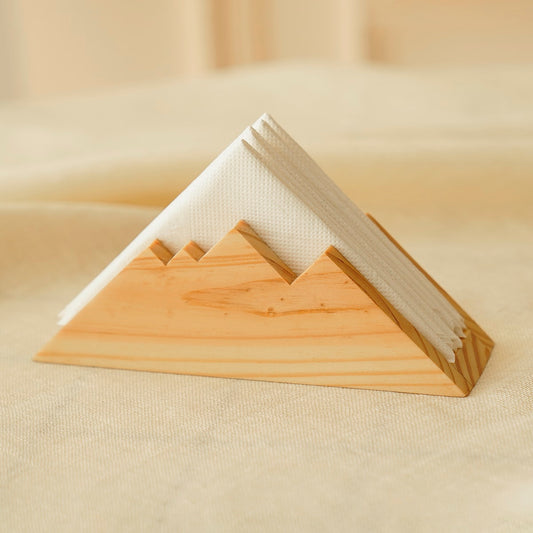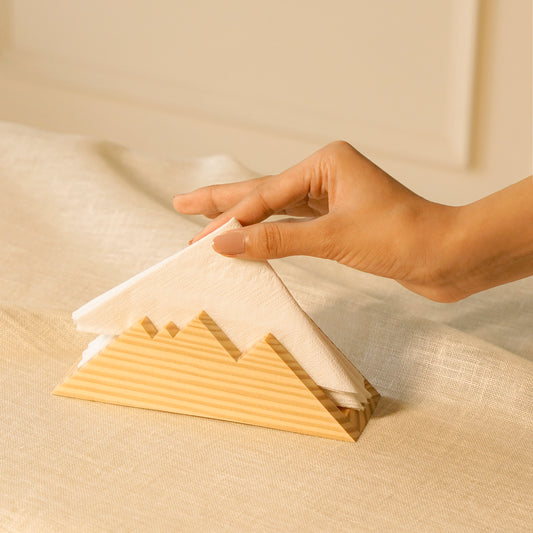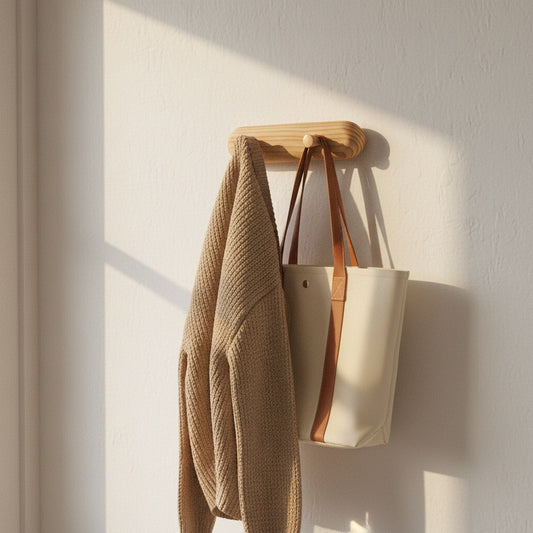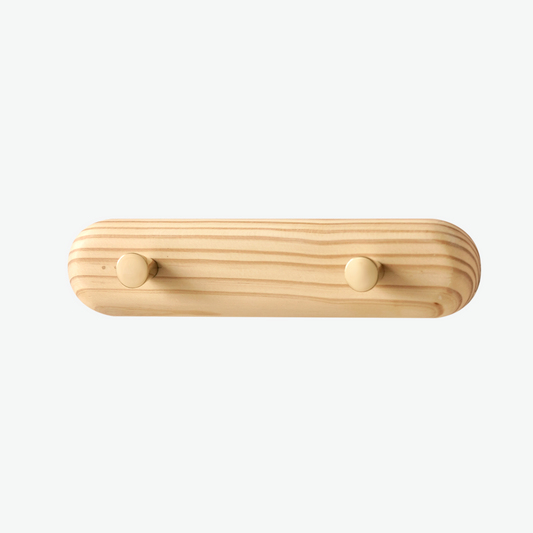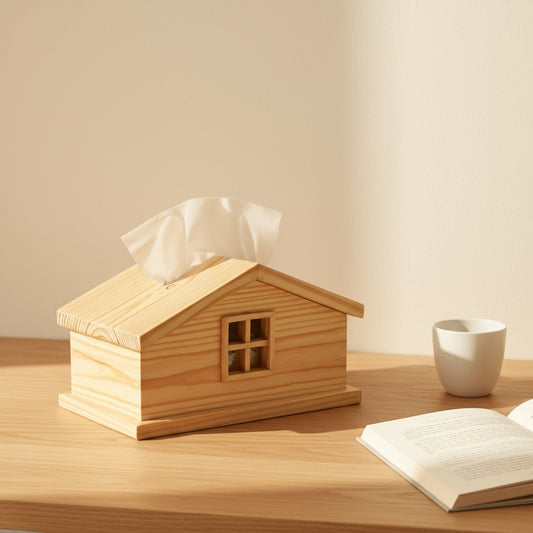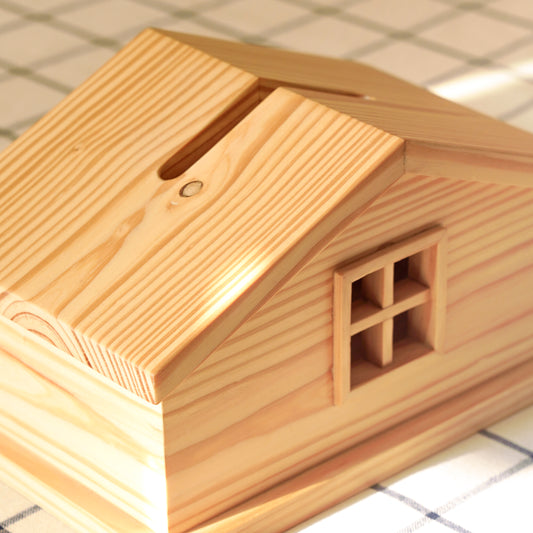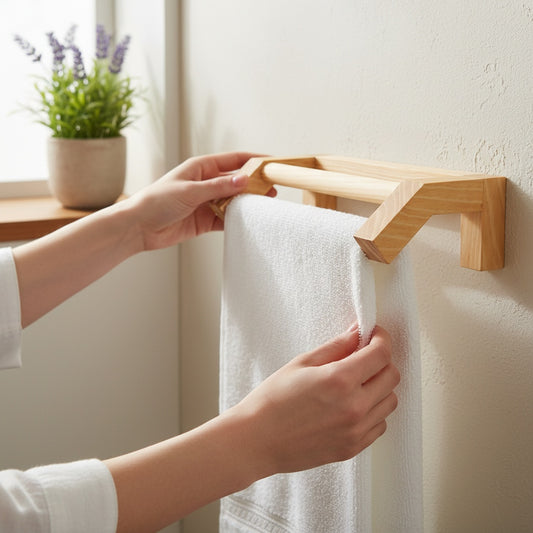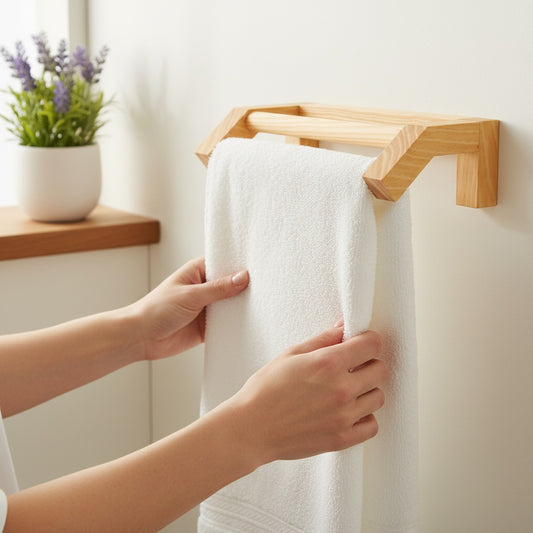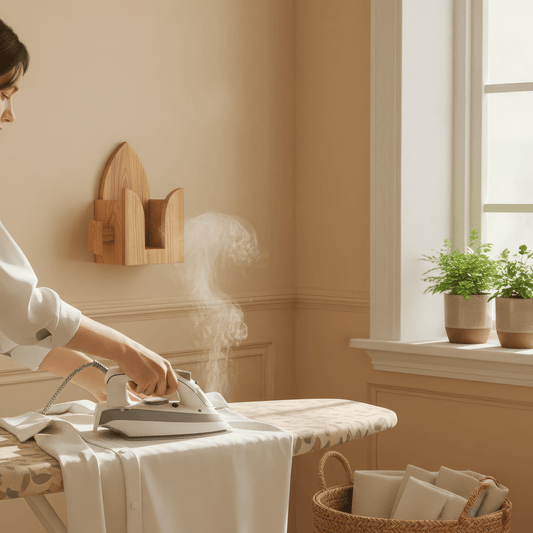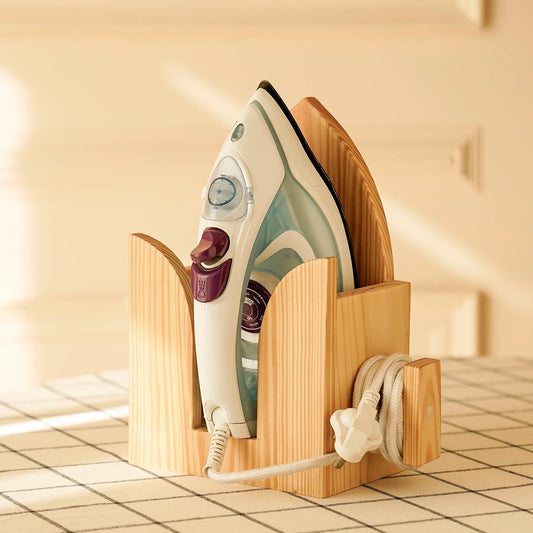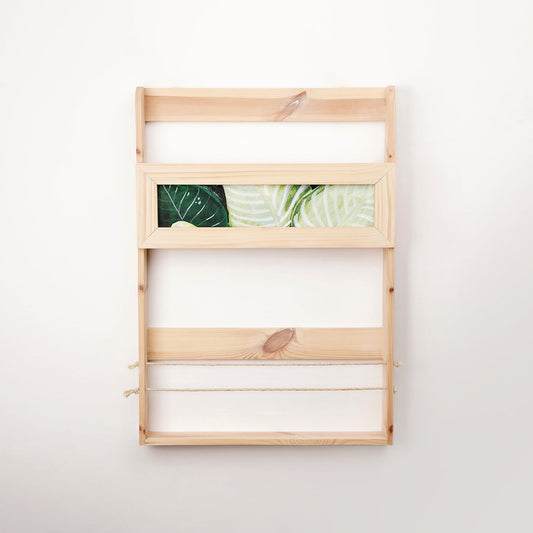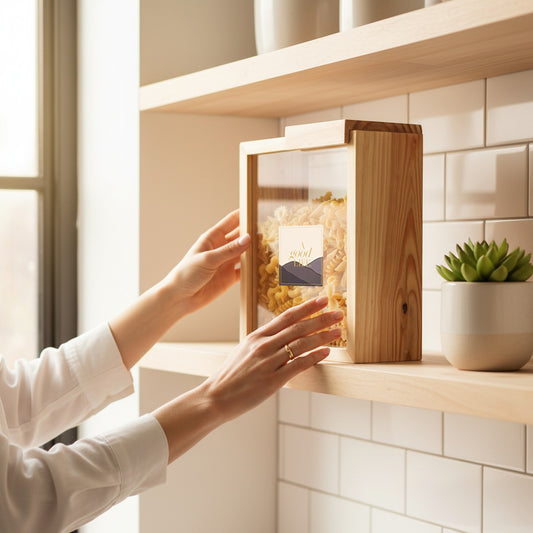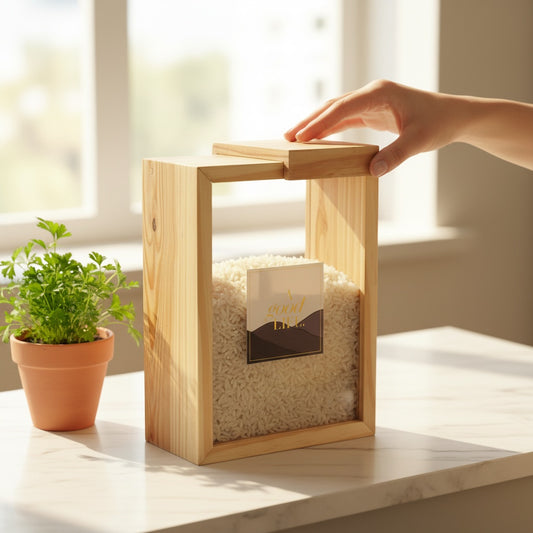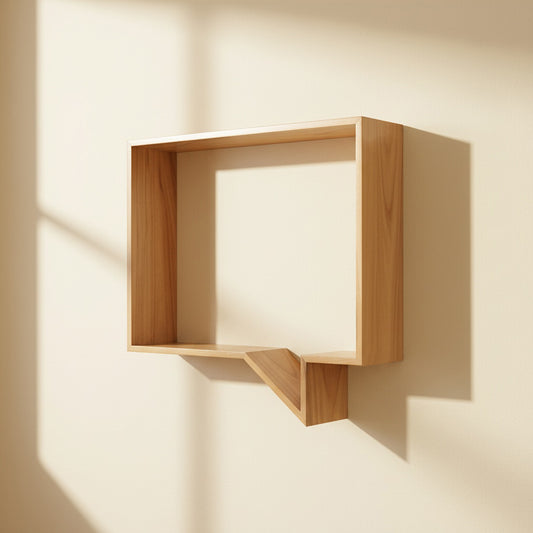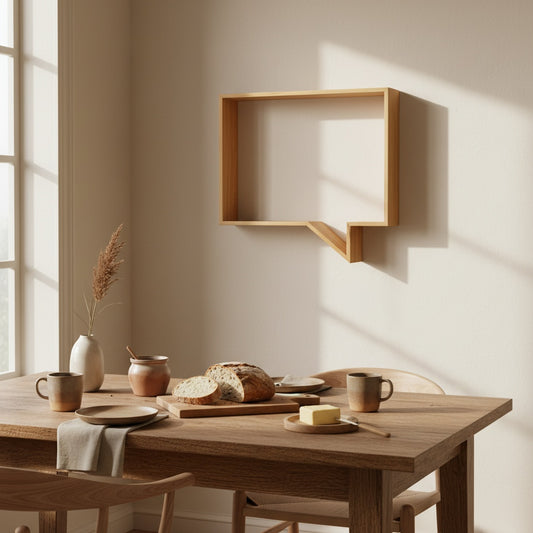Pine wood has emerged as the quintessential material for sustainable furniture in modern homes, offering an unparalleled combination of environmental responsibility, natural beauty, and practical functionality. As homeowners increasingly seek furniture choices that align with their values while enhancing their living spaces, pine wood stands out as a material that delivers on every front—from rapid renewability to timeless aesthetic appeal.
At A Good Life, our exclusive focus on pine wood furniture reflects our deep understanding of this remarkable material's unique properties and benefits. Every piece we create celebrates pine's natural characteristics while demonstrating how sustainable choices can enhance rather than compromise design excellence and functional performance.
Understanding Pine Wood's Sustainable Advantages
Pine wood's sustainability credentials are rooted in fundamental characteristics that make it one of the most environmentally responsible choices available for furniture construction.
Rapid Growth and Renewability
Fast Maturation: Pine trees reach harvestable maturity in 20-30 years, compared to hardwoods that may require 50-100 years or more.
Abundant Availability: Pine forests cover vast areas across multiple continents, providing renewable resources without threatening biodiversity.
Continuous Regeneration: Sustainable pine forestry practices ensure continuous forest regeneration and carbon sequestration.
Minimal Processing: Pine's natural workability reduces energy consumption during processing and manufacturing.
Waste Utilization: Every part of the pine tree can be utilized, from furniture lumber to biomass energy, minimizing waste.
Carbon Sequestration Benefits
Pine wood furniture serves as long-term carbon storage, actively contributing to climate change mitigation:
-
Active Carbon Absorption: Growing pine trees absorb CO2 from the atmosphere
-
Long-term Storage: Pine furniture stores carbon for decades or centuries
-
Renewable Cycle: Sustainable harvesting allows new trees to continue carbon absorption
-
End-of-life Benefits: Pine can be composted or used for biomass energy when furniture reaches end-of-life
Our Solid Wood Narrow Hallway Table demonstrates pine wood's versatility and sustainability, providing elegant functionality while storing carbon and showcasing the natural beauty that makes pine an ideal choice for conscious consumers.
Pine Wood's Unique Aesthetic Properties
Pine wood offers distinctive aesthetic characteristics that make it particularly well-suited for modern home design while maintaining timeless appeal.
Natural Beauty Characteristics
Warm Color Palette: Pine's natural honey and golden tones provide immediate visual warmth that makes spaces feel welcoming and comfortable.
Distinctive Grain Patterns: Pine's grain creates visual interest while maintaining the clean lines essential to contemporary design.
Natural Variation: Each piece of pine displays unique characteristics, ensuring that no two furniture pieces are identical.
Aging Grace: Pine develops beautiful patina over time, becoming more attractive with age and use.
Light Reflection: Pine's lighter tones help reflect light, making spaces appear larger and brighter.
Design Versatility
Pine wood's characteristics make it suitable for various design styles:
-
Scandinavian Minimalism: Clean lines enhanced by natural warmth
-
Rustic Contemporary: Character marks and natural imperfections celebrated
-
Modern Farmhouse: Combining traditional materials with contemporary functionality
-
Biophilic Design: Natural materials that connect interiors to outdoor environments
-
Transitional Styles: Bridging traditional and contemporary design approaches
Functional Benefits of Pine Wood Furniture
Beyond aesthetic and environmental advantages, pine wood offers practical benefits that make it an excellent choice for daily use furniture.
Durability and Longevity
Structural Integrity: Properly constructed pine furniture provides excellent structural performance for decades.
Repairable Nature: Pine wood can be easily repaired, refinished, and restored rather than replaced.
Dimensional Stability: Well-seasoned pine maintains its shape and dimensions over time.
Wear Resistance: Pine develops character with use rather than simply showing wear and damage.
Maintenance Simplicity: Pine furniture requires minimal maintenance to maintain its beauty and function.
Comfort and Health Benefits
Temperature Regulation: Pine wood naturally moderates temperature, feeling comfortable to touch year-round.
Humidity Moderation: Pine helps regulate indoor humidity levels, supporting respiratory comfort.
No Off-gassing: Natural pine doesn't release harmful chemicals into indoor air.
Antimicrobial Properties: Pine contains natural compounds that resist bacteria and fungi.
Acoustic Benefits: Pine's cellular structure provides natural sound dampening properties.
For bedroom furniture that showcases pine's comfort benefits, consider our Minimalist Wood Nightstand - HUSTLE Pinewood. This piece demonstrates how pine's natural properties create furniture that not only looks beautiful but actively contributes to a healthier, more comfortable sleep environment.
Pine Wood Processing and Craftsmanship
The way pine wood is processed and crafted significantly impacts both its environmental footprint and final quality.
Sustainable Processing Methods
Minimal Chemical Treatment: Pine's natural resistance to decay reduces the need for chemical treatments.
Energy-Efficient Drying: Pine's lower density requires less energy for proper kiln drying.
Waste Stream Utilization: Sawdust, shavings, and offcuts can be used for other products or energy.
Local Processing: Pine's abundance allows for local processing, reducing transportation impacts.
Traditional Techniques: Time-tested joinery methods create durable furniture without synthetic adhesives.
Craftsmanship Considerations
Grain Orientation: Skilled craftspeople orient pine grain for optimal strength and visual appeal.
Joinery Selection: Traditional joinery techniques that complement pine's working characteristics.
Finish Application: Natural finishes that enhance rather than hide pine's inherent beauty.
Character Integration: Embracing knots and natural variations as design features rather than defects.
Quality Control: Careful selection and grading ensure optimal performance and appearance.
Pine Wood in Different Home Environments
Pine wood's versatility makes it suitable for furniture throughout the home, each application taking advantage of different pine characteristics.
Living Areas
Seating Furniture: Pine's comfort properties make it ideal for chairs, benches, and seating elements.
Storage Solutions: Pine's workability allows for complex storage designs with clean aesthetics.
Display Furniture: Pine's warm tones provide excellent backgrounds for decorative objects.
Entertainment Centers: Pine's acoustic properties complement audio-visual equipment.
Bedrooms
Sleep Furniture: Pine's natural properties support healthy sleep environments.
Storage Systems: Pine's durability makes it excellent for clothing and personal item storage.
Bedside Furniture: Pine's temperature regulation provides comfort for frequently touched surfaces.
Seating Areas: Pine furniture creates comfortable spaces for dressing and relaxation.
Kitchens and Dining Areas
Food-Safe Surfaces: Pine's natural antimicrobial properties make it suitable for food-related applications.
Storage Solutions: Pine's moisture resistance works well in kitchen environments with proper finishing.
Dining Furniture: Pine's warmth creates inviting spaces for family meals and entertaining.
Organization Systems: Pine's workability allows for custom organization solutions.
Maintenance and Care for Pine Wood Furniture
Proper maintenance ensures that pine wood furniture maintains its beauty and functionality for generations.
Daily Care Practices
Dusting: Regular dusting with soft, dry cloths maintains pine's natural luster.
Spill Management: Immediate cleanup of spills prevents staining and moisture damage.
Temperature Control: Avoiding extreme temperature changes that could cause wood movement.
Humidity Management: Maintaining appropriate indoor humidity levels for wood stability.
Sun Protection: Positioning furniture to avoid excessive direct sunlight that could cause fading.
Periodic Maintenance
Oil Treatment: Occasional application of natural oils enhances pine's natural beauty and protection.
Scratch Repair: Minor scratches can be easily repaired using simple techniques.
Hardware Maintenance: Checking and tightening hardware to ensure continued functionality.
Finish Renewal: Periodic refinishing can restore pine furniture to like-new condition.
Professional Assessment: Occasional professional evaluation for major maintenance needs.
Our Wabi-Sabi Quote Display Shelf exemplifies how proper pine wood craftsmanship creates pieces that improve with age and minimal maintenance, developing character and beauty over time while continuing to serve their functional purpose.
Economic Benefits of Pine Wood Furniture
Choosing pine wood furniture provides significant economic advantages that extend beyond initial purchase price.
Initial Cost Advantages
Material Efficiency: Pine's abundance and fast growth keep material costs reasonable.
Processing Efficiency: Pine's workability reduces manufacturing labor and energy costs.
Local Availability: Regional pine sources reduce transportation costs.
Reduced Treatment Costs: Pine's natural properties minimize expensive chemical treatments.
Design Flexibility: Pine's versatility reduces the need for specialized materials.
Long-term Economic Benefits
Durability Value: Well-made pine furniture lasts for generations, providing excellent cost per year of use.
Maintenance Economy: Pine's easy maintenance reduces long-term care costs.
Repair Capability: Pine furniture can be repaired rather than replaced, extending economic life.
Resale Value: Quality pine furniture maintains and often increases in value over time.
Energy Savings: Pine's insulating properties can contribute to reduced heating and cooling costs.
The Future of Pine Wood in Sustainable Design
As sustainability becomes increasingly important, pine wood's role in furniture design will likely continue expanding and evolving.
Emerging Trends
Precision Forestry: Advanced forest management techniques that optimize pine production while enhancing ecosystem benefits.
Enhanced Processing: New techniques that maximize pine utilization while minimizing environmental impact.
Design Innovation: Contemporary design approaches that better showcase pine's unique characteristics.
Certification Evolution: Improved certification systems that better recognize pine's sustainability advantages.
Global Adoption: Increased international recognition of pine as a premium sustainable material.
Technology Integration
Smart Forestry: Technology-enhanced forest management that optimizes pine production and ecosystem health.
Advanced Finishing: New natural finishing techniques that enhance pine's durability and beauty.
Precision Manufacturing: Computer-controlled processing that maximizes pine utilization and quality.
Lifecycle Tracking: Digital systems that track pine furniture from forest to home and beyond.
Making the Pine Wood Choice
Choosing pine wood furniture represents a decision that aligns environmental responsibility with aesthetic beauty and practical functionality.
Decision Factors
Environmental Values: Pine wood supports forest regeneration and carbon sequestration while minimizing processing impact.
Aesthetic Preferences: Pine's natural warmth and character enhance rather than dominate interior design.
Functional Needs: Pine's comfort properties and durability serve daily furniture needs excellently.
Economic Considerations: Pine provides excellent value through reasonable initial cost and exceptional longevity.
Maintenance Willingness: Pine's simple maintenance requirements fit most lifestyles and preferences.
Pine wood furniture represents the perfect sustainable choice for modern homes because it successfully addresses every aspect of contemporary furniture needs—environmental responsibility, aesthetic appeal, functional performance, and economic value. By choosing pine wood furniture, homeowners participate in supporting sustainable forestry practices while creating beautiful, comfortable living spaces that will serve their families for generations.
The future of sustainable furniture lies in materials like pine that prove environmental responsibility and design excellence are not just compatible but mutually reinforcing. As more consumers recognize pine wood's unique advantages, we create market forces that support continued innovation in sustainable forestry and furniture design, ensuring that future generations inherit both beautiful homes and healthy forests.
Every piece of pine wood furniture represents a vote for a more sustainable future—one where our daily choices about the objects we live with contribute to the health and beauty of the natural world that sustains us all.

